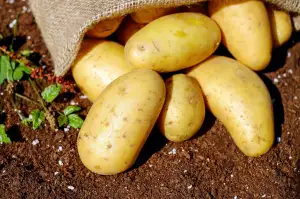Unlock the Secrets: Master the Art of Seasoning a Cast Iron Skillet for Unparalleled Culinary Excellence

Seasoning a cast iron skillet is a crucial step in achieving culinary excellence. This process involves treating the skillet with oil, creating a natural non-stick surface that enhances the flavor and texture of your dishes. Whether you're a kitchen novice or an experienced chef, mastering the art of seasoning will unlock the secrets to cooking with unparalleled precision and taste. So, let's dive into the world of cast iron skillets and discover how this simple technique can elevate your cooking game to new heights.
Benefits of seasoning a cast iron skillet
Seasoning a cast iron skillet offers numerous benefits that can elevate your culinary experience. Firstly, a well-seasoned skillet creates a natural non-stick surface, making cooking and cleaning effortless. This means you can reduce the amount of oil or fat needed for cooking, resulting in healthier meals. Additionally, seasoning helps to prevent rust and corrosion, prolonging the lifespan of your skillet. The seasoning process also enhances heat distribution and retention, ensuring even cooking throughout your dishes. Lastly, a properly seasoned cast iron skillet imparts a unique flavor to your food, adding depth and richness to every bite.
Step-by-step guide to seasoning a cast iron skillet
Step 3: Step-by-step guide to seasoning a cast iron skillet
a. Cleaning the skillet: Start by scrubbing the skillet with hot water and a stiff brush to remove any dirt or residue. Avoid using soap as it can strip away the seasoning.
b. Applying oil to the skillet: Once the skillet is clean and dry, apply a thin layer of cooking oil or fat to the entire surface, including the handle. Use a paper towel to spread the oil evenly.
c. Heating the skillet: Preheat your oven to 350°F (175°C). Place the oiled skillet upside down on the middle rack of the oven with a baking sheet or aluminum foil on the bottom rack to catch any drips.
d. Cooling and storing the skillet: Bake for one hour, then turn off the oven and allow the skillet to cool completely inside before removing it. Once cooled, store your seasoned cast iron skillet in a dry place to prevent rusting.
Remember, this process may need to be repeated several times initially to build up a good seasoning layer. With each use, your cast iron skillet will become more non-stick and develop better flavor in your dishes.
Cleaning the skillet
Cleaning the skillet is an essential first step in the seasoning process. Start by scrubbing off any food residue using a stiff brush or sponge and hot water. Avoid using soap, as it can strip away the seasoning. For stubborn stains, sprinkle some coarse salt on the skillet and scrub gently. Rinse thoroughly and dry completely to prevent rusting. Remember, a clean skillet is key to achieving a perfect seasoning.
Applying oil to the skillet
Applying oil to the skillet is a crucial step in the seasoning process. After cleaning the skillet, make sure it is completely dry. Then, pour a small amount of high smoke point oil, such as vegetable or flaxseed oil, onto a paper towel or cloth. Rub the oil all over the skillet, making sure to cover every surface including the handle and sides. The goal is to create a thin and even layer of oil that will bond with the iron. Avoid using too much oil as it can result in a sticky residue. Once coated, remove any excess oil with a clean cloth. This will prevent any pooling or dripping during the heating process. Remember, a well-oiled skillet will develop a beautiful dark patina over time, enhancing its non-stick properties and adding depth of flavor to your dishes.
Heating the skillet
Heating the skillet is a crucial step in the seasoning process. After applying oil to the skillet, place it on a stovetop burner set to medium heat. Allow the skillet to heat up gradually for about 10 minutes. This will help the oil penetrate and bond with the iron surface, creating a non-stick coating. Make sure to heat both the bottom and sides of the skillet evenly. Once heated, you may notice some smoke or a slight odor, which is normal during this process. Heating ensures that the oil polymerizes and forms a durable layer that will enhance your cooking experience.
Cooling and storing the skillet
After heating the skillet, turn off the heat and allow it to cool completely. It's important not to rush this step as sudden temperature changes can cause the skillet to warp. Once cooled, use a paper towel to wipe away any excess oil. Avoid using soap or abrasive materials as they can strip away the seasoning. To store your cast iron skillet, place a paper towel inside to absorb any moisture and prevent rusting. Store it in a cool, dry place, away from direct sunlight. With proper cooling and storage, your seasoned cast iron skillet will be ready for your next culinary masterpiece!
Tips and tricks for maintaining a seasoned cast iron skillet
1. Avoid using soap: When cleaning your cast iron skillet, avoid using soap as it can strip away the seasoning. Instead, use hot water and a stiff brush to remove any food residue.
2. Dry thoroughly: After washing your skillet, make sure to dry it thoroughly to prevent rusting. You can place it on the stove over low heat for a few minutes or towel dry it completely.
3. Re-season when necessary: Over time, the seasoning on your cast iron skillet may start to wear off. If you notice food sticking to the surface or a lack of non-stick properties, it's time to re-season. Simply follow the steps mentioned earlier in this article.
4. Store properly: To prevent moisture from causing rust, store your cast iron skillet in a dry place with good ventilation. Avoid stacking other cookware on top of it to prevent any damage.
5. Use wooden or silicone utensils: When cooking with a seasoned cast iron skillet, use wooden or silicone utensils instead of metal ones. Metal utensils can scratch the surface and potentially remove the seasoning.
By following these tips and tricks, you can ensure that your seasoned cast iron skillet remains in top-notch condition, providing you with unparalleled culinary excellence for years to come.
By mastering the art of seasoning a cast iron skillet, you unlock a world of culinary possibilities. The benefits are plentiful - from enhanced flavor and improved non-stick properties to increased durability and easier cleaning. With a properly seasoned skillet, you can confidently cook anything from delicate eggs to hearty steaks with ease.
So, take the time to follow our step-by-step guide and maintain your seasoned skillet with care. Remember to clean it properly after each use, apply oil regularly, and store it in a dry place. With these simple tips and tricks, your cast iron skillet will become an invaluable tool in your kitchen.
Embrace the excellence that comes with a well-seasoned cast iron skillet. Experience the joy of perfectly seared meats, crispy vegetables, and mouthwatering dishes that will impress even the most discerning food connoisseurs. So go ahead, season your skillet and elevate your cooking game to new heights. Happy seasoning!
Published: 02. 12. 2023
Category: Food



